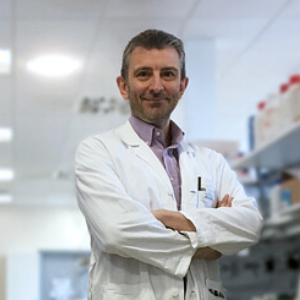Despite carrying out a sophisticated and crucial process, the machinery (or the operator) is somewhat “careless”: in fact, every time it makes a copy of the original genetic material, it makes errors, and the copy has differences compared to the original.
These differences are the so-called mutations, that affect the structure of the virus proteins and their function. In recent days we have heard about the G614 (or better, D614G) variant of the virus: what happened is that the RNA polymerase got “distracted” while making a copy of the viral genome, and it has changed one base (a “brick”) of RNA.
This caused a mutation of the Spike protein in position 614, which however is not a site of direct contact with the ACE2 enzyme, so its effect on the structure and function will have to be assessed experimentally to understand its consequences. In any case, these mutations have consequences on the virus, meaning they can be neutral, advantageous or disadvantageous. A mutated virus will begin to circulate if this mutation gives it an advantage for its life cycle: this may mean being more efficient at infecting human cells, for example, but causing less damage to the host organism, as a highly lethal virus it is destined to disappear for lack of guests.
.jpg?width=800&name=RNA_polymerase_SARS-CoV_2_sloppy_photocopier_San_Raffaele_University%20(4).jpg)
.jpg)

.png?width=800&name=RNA_polymerase_SARS-CoV_2_sloppy_photocopier_San_Raffaele_University%20(1).png)
.jpg?width=800&name=RNA_polymerase_SARS-CoV_2_sloppy_photocopier_San_Raffaele_University%20(3).jpg)
.jpg?width=1904&name=RNA_polymerase_SARS-CoV_2_sloppy_photocopier_San_Raffaele_University%20(5).jpg)
.jpg?width=800&name=RNA_polymerase_SARS-CoV_2_sloppy_photocopier_San_Raffaele_University%20(4).jpg)
.jpg?width=800&name=RNA_polymerase_SARS-CoV_2_sloppy_photocopier_San_Raffaele_University%20(1).jpg)
.png?width=1280&name=RNA_polymerase_SARS-CoV_2_sloppy_photocopier_San_Raffaele_University%20(2).png)